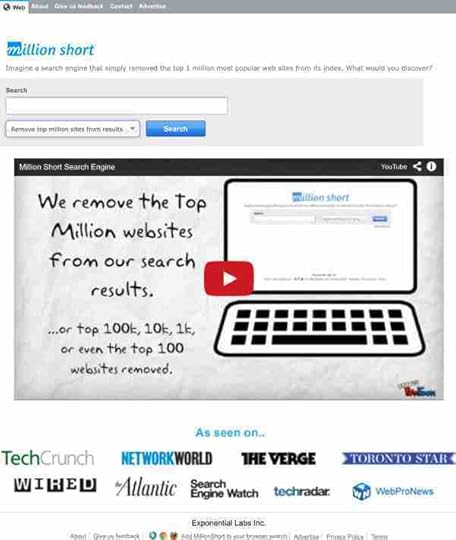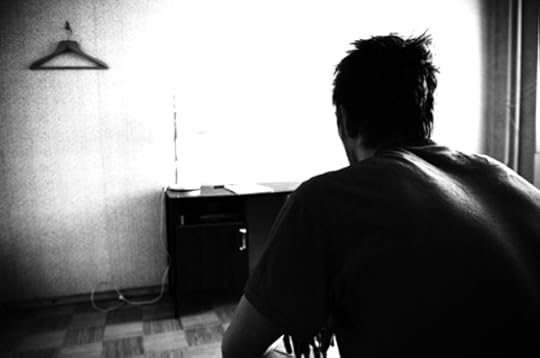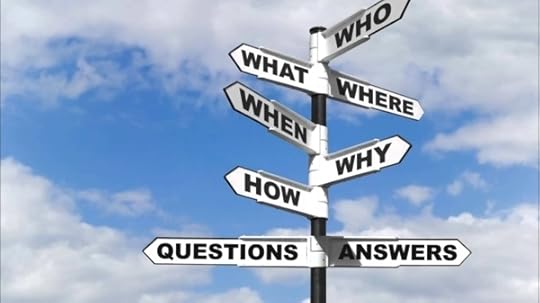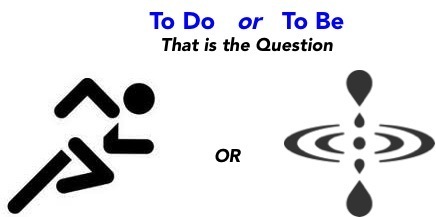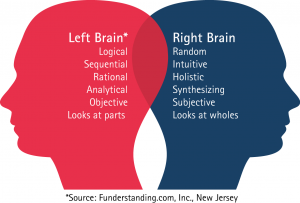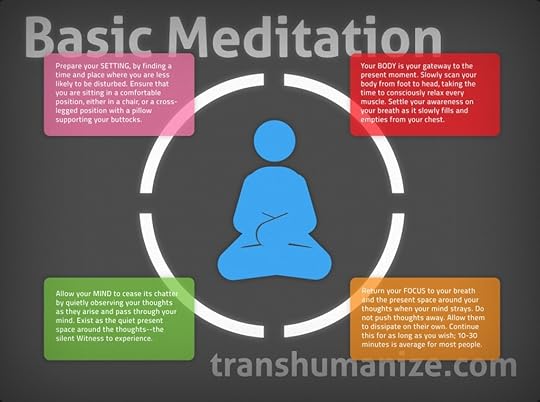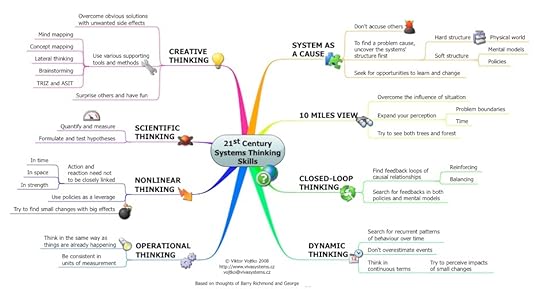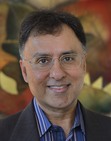Jay Kshatri's Blog, page 17
December 16, 2013
Two Internet Search Techniques You Should Have in Your Toolbox
The internet, the repository of the world’s collective knowledge is available to more and more people around the globe. But to get the most out of it requires mastering how Google (and other search engines) work and the techniques to quickly find the best information in the vast amount of data available on the Internet.
One of the key things to be aware of is how Google actually decides what results it will show you and in what order (see Chapter Four in Think Smarter in a Digitally Enabled World: A 21st Century Life Manual for Amplifying Your Knowledge, Achieving Your Potential & Changing the World for a detailed explanation of how to master the art of internet search). At a high level, Google will provide you results up front that are most often cited or linked to by others (or in other words, most popular).
However, that doesn’t mean that’s the best information, only that it’s the most often referred to. There could be, and definitely are gems located much further down the results page. What this means though is that you’ll have to scroll through a lot of results to find them. That’s not too difficult to go through the first 100-200 results, but what about the information that’s buried deep in a 90,000,000 results search?
Millionshort.com
Fortunately, there is now a relatively new internet search tool which can help us get to those hidden gems. It’s called MillionShort.com. MS describes themselves as more of a discovery engine that allows you to REMOVE the top million (or top 100k, 10k, 1k, 100) sites from the results set.
Million Short makes it easy to discover sites that just don’t make it to the top of the search engine results for whatever reason (poor SEO, new site, small marketing budget, competitive keyword(s) etc.). Most people don’t look beyond page 1 when doing a search and now they don’t have to.
Give millionshort.com a try and play around with the settings for how many results to remove (100, 1k, 10K, 100k, or 1 million). You’ll find some interesting things that you normally would not have seen.
Google Compare Command
The second Google tip is a way to have Google compare two foods based on information it has in it’s vast knowledge base. When you use the word compare in a sentence such as compare almonds and walnuts, Google will create a table for you in the following manner:
I have only been able to get the table comparison for food items. But it’s a handy tool for those of us trying to pay more attention to the foods we eat (well, at least once the holiday’s are done…).
Happy Searching,
➨ If you liked this post, please forward post it your various social networks.
➨ I would love to hear what internet search techniques and tools you have found particularly useful. Please leave a comment below.
If you want to gain more insight into the topics in this post, please see Think Smarter in a Digitally Enabled World: A 21st Century Life Manual for Amplifying Your Knowledge, Achieving Your Potential & Changing the World. The book is about changing the world through mastering holistic systems thinking. With massive technological change and globalization affecting almost every facet of our lives, the “Killer App” in the 21st century will be the ability to Continuously Learn and leverage our capability for Proactive Thought. With the Internet, we now have instantaneous access to the world’s collective knowledge – which grows exponentially every year. Those who can access it, analyze it, make sense of it, organize it, and put it into action will deeply accelerate their personal and professional success. It will require using a new set of thinking tools, fully harnessing our digital technologies and apps, understanding how to see the systemic interconnections in our daily lives, and learning to maximize the combination of our logical left brain and our intuitive, creative, and spiritual right brain. The book gives the reader the tools, techniques, and strategies to accomplish this goal.
The post Two Internet Search Techniques You Should Have in Your Toolbox appeared first on Think Smarter World.
December 13, 2013
The Television, the Wall, and Why?
We are a culture of convenience and automation. Making things easier in our busy lives is considered a virtue. This even extends to our minds – the 24/7 media and entertainment outlets work overtime feeding us a steady stream of content. As a result we don’t need to do much heavy mental lifting ourselves.
But there is one problem. Much of what we do in consuming today’s always on information and entertainment sources is done passively. We spend too much time in receive mode. The effect is most dramatic when watching television. In November 2012, Psychology Today magazine reported the following effects on our brains when we turn on the tube:
Studies have shown that watching television induces low alpha waves in the human brain. Alpha waves are brainwaves between 8 to 12 HZ. and are commonly associated with relaxed meditative states as well as brain states associated with suggestibility.
While Alpha waves achieved through meditation are beneficial (they promote relaxation and insight), too much time spent in the low Alpha wave state caused by TV can cause unfocussed daydreaming and inability to concentrate.
Researchers have said that watching television is similar to staring at a blank wall for several hours.
In an experiment in 1969, Herbert Krugman monitored a person through many trials and found that in less than one minute of television viewing, the person’s brainwaves switched from Beta waves– brainwaves associated with active, logical thought– to primarily Alpha waves. When the subject stopped watching television and began reading a magazine, the brainwaves reverted to Beta waves.
Research indicates that most parts of the brain, including parts responsible for logical thought, tune out during television viewing.
Advertisers have known about this for a long time and they know how to take advantage of this passive, suggestible, brain state of the TV viewer. There is no need for an advertiser to use subliminal messages. The brain is already in a receptive state, ready to absorb suggestions, within just a few seconds of the television being turned on. All advertisers have to do is flash a brand across the screen, and then attempt to make the viewer associate the product with something positive.
This of of course is a good case for recording the television programsyou do watch first on a DVR and then skipping through the ads later. In fact, in an analysis in 2010 reported in the Wall Street Journal, it was found that the typical 3 hour football game broadcast contained just 11 minutes of actual play on the field. The rest of the time was taken up by time outs, commentary by the announcers, and advertisements (you now know why those Superbowl ads cost so much…).
So the easy answer is to not watch so much television. But of course TV is just one of our many forms of media and entertainment that we consume all day long. A more potent antidote to our passive consumption is to switch the brain into a proactive mode by asking some critical questions. The act of questioning immediately puts your brain into a conscious proactive mode.
Successful people ask better questions, and as a result, they get better answers. – Anthony Robbins
Start by asking one of my favorite and deceptively simple questions – Why?
Why do our weather patterns keep changing with such ferocity?
Why is there such an emphasis on winning and losing in our society?
Why haven’t we done better in reducing gun violence since Newtown?
Why was it necessary to open the shops on Thanksgiving?
Questions give us the entry way to being proactive users of our technology resources versus being passive participants. They are the gateway to being intentional about our lives - identifying what information we want to acquire and then proactively acquiring it versus passively taking in what someone has decided to broadcast.
Asking the question is the first step. The second step is our own contemplation. What answers can we come up with ourselves based on our own knowledge and perceptions. We can surprise ourselves sometimes. Periodically we see that we haven’t stopped to really consider the question before but we have definite opinions about it once we start to be mindful about our own feelings.
Next is to go beyond ourselves and do a Google Search and find the best information possible to learn more about the question. There is an art to searching on the internet and a well executed search can quickly un-earth the right information. Too broad a search can get us lost in the 90,000,000+ search results that Google will bring back. [Chapter Four in Think Smarter in a Digitally Enabled World: A 21st Century Life Manual for Amplifying Your Knowledge, Achieving Your Potential & Changing the World is focused on mastering internet search].
The fourth step is to “triangulate” the information you are coming across. See where things overlap and where people and sources from different backgrounds agree – the truth tends to linger there.
Lastly, we can start to create sequences of questions. A good set I like to drive personal change with is Why – What – How. For example:
Why haven’t I been able to lose ten pounds.
Wha t is holding me back (determination, schedule issues, wrong diet, etc)?
How do I get back on track and ensure that I achieve the goal?
The more honest we can be with ourselves in answering the questions, the better. In the end, of course, action will be required and that’s where the rubber meets the road. But hopefully the questions and the process of answering them will spur on new motivation and insight. All change and progress starts by someone first asking a great question.
One of the most mind-expanding questions of them all of course is What-If?
What if all people saw each other as inherently the same and connected? How would we treat each other differently? How would business be conducted differently?
What if teachers were the highest paid people in our society? How would that change the quality of our education? What would it require to achieve?
What if we provided free healthcare and free college education to all citizens? Would it be affordable? What would we have to give up elsewhere in our national budget to achieve? Would it unleash higher levels of productivity or would the downsides outweigh the good?
What if we could take out all contributions from political national and state political campaigns (each person would be allotted a fixed amount by the government)?
What if all news and talk TV (think the sunday news programs frequented by politicians) had instant fact-checking and showed a ticker running at the bottom of the screen with the results?
These examples are a bit utopian for sure, but they have the power to open our minds and can spur us into investigating possibilities, and hopefully, taking action in some way to improve our own world and the world around us.
A recent quote I posted sums it up well:
"It's no measure of health, to be well-adusted to a sick society - J. Krishnamurti"...
Click To Tweet - Powered By CoSchedule
Or, a more current sentiment:
"Remember, the Whole System Depends Upon You Not Asking Too Many Questions"...
Click To Tweet - Powered By CoSchedule
Questions require no technology whatsoever, but they allow us to master and control the most basic elements of our lives (like the weight example above) and also our ever more powerful digital tools and other technology inventions. The next fifty years will provide us unforeseen technological capabilities. It will also challenge us to make decisions about how to (or not to) use our technological capabilities. Specifically, advances in genetics, robotics, artificial food sources, and other areas will require all of us to ask difficult questions in order to decide the best way forward for society. Hopefully we will all be up to the challenge. We clearly can’t afford to keep staring at that blank wall for much longer…
Wishing you success and inner peace in all your endeavors,
Jay Kshatri
www.ThinkSmarterWorld.com
–>If you liked this post, please forward post it your various social networks.
–>I would love to hear what great questions you have asked over the years. Please leave a comment below.
If you want to gain more insight into the topics in this post, please see Think Smarter in a Digitally Enabled World: A 21st Century Life Manual for Amplifying Your Knowledge, Achieving Your Potential & Changing the World. The book is about changing the world through mastering holistic systems thinking. With massive technological change and globalization affecting almost every facet of our lives, the “Killer App” in the 21st century will be the ability to Continuously Learn and leverage our capability for Proactive Thought. With the Internet, we now have instantaneous access to the world’s collective knowledge – which grows exponentially every year. Those who can access it, analyze it, make sense of it, organize it, and put it into action will deeply accelerate their personal and professional success. It will require using a new set of thinking tools, fully harnessing our digital technologies and apps, understanding how to see the systemic interconnections in our daily lives, and learning to maximize the combination of our logical left brain and our intuitive, creative, and spiritual right brain. The book gives the reader the tools, techniques, and strategies to accomplish this goal.
The post The Television, the Wall, and Why? appeared first on Think Smarter World.
December 10, 2013
Krishnamurti – Sick Society [Quote]




It’s no measure of health, to be well-adjusted to a sick society.
-Jiddu Krishnamurti



The post Krishnamurti – Sick Society [Quote] appeared first on Think Smarter World.
November 26, 2013
To Do, or To Be?
To Do, or To Be - That is the Question. We’ve been conditioned over the last fifty years to believe that we can logically think through any issue and achieve any desired accomplishment, simply by trying harder and taking stronger action. On the other side, the new age movement has been centered on going inward and using meditation and visualization to manifest success through our thoughts. But the greatest minds over the ages have always known that it is the combination of the workings of the left and right brain that provides the greatest results.
To access the unlimitless inspiration that the right-brain can provide, there is no better tool than meditation. The list of business people, entrepreneurs, scientists, and artists who practice meditation and mindfulness to amplify their professional results is growing daily. Here is a small sample from the past and present:
Business
Larry Ellison – CEO, Oracle
Bill George – CEO retired, Medtronic
Ray Dalio – CEO, Bridgewater Associates
Rupert Murdoch – CEO, Newscorp
Oprah Winfrey, CEO, O Network
Padmasree Warrior, CTO, Cisco Systems
Bill Ford, Chairman, Ford Motor
Arianna Huffington, CEO, Huffington Post
Steve Jobs, CEO, Apple
Science and Medicine
Albert Einstein, Quantum Physicist
Peter Russell, Quantum Physicist
Amit Goswami, Quantum Physicist
Isaac Newton, Physicist
Benjamin Franklin, Inventor
Dr. Mehmet Oz, Cardiac Surgeon
Writers
Jack Canfiield
Wayne Dyer
Henry David Thoreau
Ralph Waldo Emmerson
Artists / Actors / Musicians
Mozart
Russell Brand
Jim Carey
Sheryl Crow
Hugh Jackman
Ellen Degeneres
Paul McCartney
David Lynch
Martin Scorsese
Herbie Hancock
Clint Eastwood
Jerry Seinfeld
Sting
Albert Einstein meditated a few times a day. As he famously said,
It was the way to get answers even before you asked the questions.
Matthew E. May wrote in Strategy + Business magazine in February 2013 that “Meditation – a practice that eliminates distraction and clears the mind – is an effective way to enhance self-awareness, focus, and attention, and to prime your brain for achieving creative insights. Oracle chief executive Larry Ellison meditates (up to three times per day), and asks (it’s an actual job requirement) his executives to do the same. In 2007, Google initiated a mindfulness and meditation course at its Google University to help its employees maintain the company’s strong track record for innovation. Leaders at GE, 3M, Bloomberg Media, Green Mountain Coffee Roasters, and Salesforce.com meditate.”
So that’s the ‘Be” part. Calm and focus the mind and as a result achieve greater clarity, insight, creativity, and personal awareness. Oh, and dramatically reduce your stress and improve your health. A very high Return on Investment for 20 minutes a day.
But we can’t just “Be”. The names on the list above are all very successful in their respective fields, they are accomplished doers. So, the “Do” is just as important and it is when we use the “Be” to tap into our right-brain creativity and intuition to feed into our “Do” efforts on a daily basis, that we create a powerful catalyst for personal transformation and accomplishment.
So is there a special something that highly accomplished doers do better than others? Large amounts of practice (the famous 10,000 hours), a certain level of innate talent, and an un-bending will to succeed are all part of the mix. But there is also one other ingredient that in today’s interconnected, global, and high-tech world is in many ways the key determinant to success – They Continuously Learn.
In today’s world, those who want to succeed, know they must embrace change, growth, and assimilate knowledge faster than ever before. The world’s knowledge, which is growing exponentially, is on-line and available to more and more people around the globe. Competitive advantage through access to restricted amounts of knowledge and information is becoming harder to achieve. The 13 year old in Kuala Lampur is taking the same graduate level MIT electrical circuits class on line as the engineering professional trying to get his Masters degree part time. Competitive advantage today is through who can more proactively, rapidly, and effectively take advantage of the world’s collective knowledge which is readily available online and available to everyone.
Proactive Learning is something that both children and adults should learn and practice. It’s an aspect of critical thinking that forces us to move from a reactive or passive approach to ingesting our 24/7 stream of media and entertainment to a proactive thinking one. What are some of the key components to this?
Formulate Great Questions – the act of generating a question, immediately takes you out of the reactive mode and into the proactive stance. “If you do not ask the right questions, you do not get the right answers. A question asked in the right way, often points to its own answers. Asking questions is the A-B-C of diagnosis. Only the inquiring mind solves problems.” – Edward Hodnett. It is the art of the question that sets you up for getting to the heart of any subject.
Master the art of Internet Search – once you start generating great questions, you need an effective way to locate the best answers. Most people are unaware of all the different methods to find the best answers on Google or other search engines. Typing in a simple query in the search bar and browsing through the first 20 hits out of 90,000,000 will get you some level of information (the most popular), but perhaps not the best and most helpful for your particular needs. Professional researchers in many fields are very sophisticated in their approach – with proper technique in their queries, they can reduce that 90,000,000 result down to 300 of the most relevant sources to their inquiry within minutes. If Google is the world’s collective human knowledge on line – developing the skills to access the best information is an extreme competitive advantage.
Ingest only High Quality Information, Media, and Entertainment. We have a limited amount of time every day, but an endless supply of media and information to consume. Just as with food, we are what we consume. These are some of the questions I use to determine what sources of media and information to consume. I’m sure there are others:
Does it educate in a meaningful way?
Does it uplift?
Does it provide non-obvious insight?
Is it truthful?
Does it seek to bring people together?
Is the source based on a quest to help people understand themselves and others better?
Does the source seek to improve the state of humanity and the world or does it play to the most crass aspects of our human nature?
Of course, sometimes, a piece of fluff is just what the doctor ordered. The brain needs that from time to time. But eat fluff on a daily basis, and well, you know what happens. There is a saying in sports – “You need to play up”. Which means in order to improve your game, you need to play with people better than you. The same goes for learning. If you want to expand your mind you need to challenge yourself with information and ideas beyond your current comfort zone.
4. Learn Systems Thinking. Once we know what we want to find out, know how to get it, ingest only the best sources, then we can move to the next step – putting all the pieces of information that we have available to us and understanding the big picture. Success in the 21st century comes from understanding things at a System Level – how things are interconnected, the feedback mechanisms involved, and how changes in inputs result in different outputs. Essentially processing and making intelligent sense of the massive amount of information engulfing us around the clock. There are a whole array of Systems Thinking tools that professionals in Science, Engineering, Business and other professions use on a daily basis to make sense of our highly complex and interconnected world. They are essentially aids to help us think through issues and see below the surface. What looks like one thing, turns out to be something different when we gain new information or look from a different perspective.
Systems Thinking expert, Linda Booth Sweeney has written of the many benefits of Systems Thinking – here are some:
See the world around us in terms of wholes, rather than as single events, or “snapshots” of life.
See and sense how the parts of systems work together, rather than just see the parts as a collection of unrelated pieces.
See how the relationships between the elements in a system influence the patterns of behavior and events to which we react.
Understand that life is always moving and changing, rather than static.
Understand how one event can influence another, even if the second event occurs a long time after the first, and “far away” from the first.
Know that what see happening around us depends on where we are in the system.
There are many different Systems Thinking tools and techniques to use. One of the easiest to get started with is Mind Mapping. See my previous post – Breakdown of the Shutdown -to see MindMapping in action. You can also get a complete overview of Systems Thinking with a broad array of tools and techniques in chapter five of my book Think Smarter in a Digitally Enabled World. Now available on Amazon and iBooks.
So we started with the a question – To Do or To Be. Hopefully you now agree, that when we combine “Being” with “Doing” we start working and living holistically and tapping into the enormous power of our whole brain. When that happens there is no limit to what we can achieve. To Do and To Be, that is the answer.
The post To Do, or To Be? appeared first on Think Smarter World.
November 25, 2013
Beware those who are absolute in their Beliefs… [Quote]




“If science teaches me anything, it teaches me that even simple things like an atom are fairly hard to understand. And that makes me skeptical of anyone who claims to have the last word or complete understanding of any deep aspect of reality.”
-Sir Martin Rees, Astrophysicist



The post Beware those who are absolute in their Beliefs… [Quote] appeared first on Think Smarter World.
November 19, 2013
Effortless Meditation

Photo Courtesy of Hans-Peter Gera
A quiet mind is not a state of mind to be achieved. It’s the state we experience when there is nothing to be achieved.
Peter Russell, the Physicist and expert meditation instructor for the last forty years, was quoted saying that a few months back in the Intelligent Optimist Magazine - www.theoptimist.com. Russell is the author of a number of books and his most famous is the Global Brain which he wrote in 1982.
In other words, when meditating, trying harder, is not better.
In the article titled Effortless Meditation, Peter takes a slightly different approach to meditation that I think would benefit many people who struggle with achieving the quintessential “mind like glass” state of pure calm and no-thought that is sometimes believed to be the ultimate achievement in a meditation practice. Those that practice meditation know that getting to an absolute no-thought state is very difficult. In fact, people try very hard to achieve it, and in the process, get discouraged. The good news is that Peter Russell says that reaching that state is unnecessary. Instead, he provides three main principles to achieve Effortless Meditation:
❝ Accept your thoughts, not trying to stop thinking, not resisting it. Just let them be; don’t follow where they are going. Don’t try to focus your mind … drop back into that natural state of contentment.
The key point is that thoughts will naturally arise all the time, it is our response to them that matters. Non-attachment to the arising thoughts – just letting them pass or pushing them gently along to regain your a calm mind is the key. What you will notice over time is that the mind will quiet itself, as if realizing it can’t bait you into reacting. And if you think about it, this is what you need to do when you aren’t meditating – just going through your normal day to day routine. There will be many distractions and irritations leading to unwanted thoughts. Accept them, recognize them, and let them go on their way…
❝ Notice discomfort in your body. We often resist discomfort, we wish it weren’t there; we push it away. Or we think, It’s getting the way of meditation. But if you hear a sound, the sound itself is not the problem. It’s in your mind. When your mind says ‘that’s disturbing’, you get disturbed. Try to be friends with the resistance. Be curious about it.
Ignoring internal and external irritations is part of the process in learning how to take back control of your mind. When we don’t react to those things, they lose their control over us. Without a doubt, it’s difficult. But with daily meditation practice, you’ll find yourself achieving the goal more and more and the benefit will also carry over into the rest of your day. You are essentially training your mind to not get disturbed.
❝ Let go. We often think of letting go as getting rid of something, of a feeling or a thought. I rephrase ‘let it go’ as ‘let it be’. We want to feel ok all the time, so if there’s pain or discomfort we want to get rid of it. But the easiest way is to accept it. Then it doesn’t grip us so much. People find that in meditation if you open up to an itch, it often doesn’t matter anymore.
A priceless saying is “What we Resist, Persists”. The mind has an annoying tendency to “lock onto” things that it finds irritating. Ironically, the more it tightens its grip, the worse we feel. Letting go is the sane response to reclaiming control of your mind and your thoughts.
If you already meditate, I congratulate you. I think it’s the best thing any of us can do to regain our sense of oneness with the world and ourselves. If you haven’t started meditating or want to know more, take a look at the section on meditation in my book - Think Smarter in a Digitally Enabled World (Amazon - http://goo.gl/OszyR2)- where you’ll find a number of interesting resources to help you get started or expand upon your current practice.
Wishing you much Serenity and Peace of Mind-
Jay Kshatri
www.ThinkSmarterWorld.com
The post Effortless Meditation appeared first on Think Smarter World.
November 12, 2013
Putting a Band-Aid on a Broken Arm
“It’s not a real solution, it’s just a Band-Aid.” That one phrase conveys an enormous amount of information about an action. It says that we have under appreciated the severity or potential consequences of a problem and either consciously or unconsciously, are attempting to deal with it in a superficial way.
And if we pay attention, it seems at a personal, professional, and societal level we are putting Band-Aids all the time on things that deserve much deeper, proactive solutions.
Why?
Because Band-Aids feel good, they give us a psychological boost, they are fast to put on, and don’t require a lot of effort. Any parent knows this. The effect of most “boo-boo’s” can be alleviated with a trusty Band-Aid. In fact, both sides feel good. Action has been taken. Progress has been made.
But when we are dealing with things that are much bigger, Band-Aid’s are dangerous. They hide the true nature of the problem and hinder us taking the meaningful action that is necessary. We feel good in the short term, and pay dearly in the long term.
I’ve put many Band-Aids on metaphorical “Broken Arms” over the years only to have to pay the significant price that delayed action always charges.
Trust me, identify the various Broken Arms with Band-Aids in your life now, and get down to the real work of repair and renewal. You’ll be much happier and much more successful in the long run if you do.
The post Putting a Band-Aid on a Broken Arm appeared first on Think Smarter World.
November 11, 2013
The 5 Mind-Expanding Questions You Must Ask Now to Accelerate Your Life [Link]




The 5 Mind-Expanding Questions You Must Ask Now to Accelerate Your Life



Guest Post on the 5ThingsToDoToday.com Blog in London
November 7th, 2013
The post The 5 Mind-Expanding Questions You Must Ask Now to Accelerate Your Life [Link] appeared first on Think Smarter World.
November 10, 2013
Mental Shrinkage
Clifford Nass, Stanford Professor who pioneered research into the study of the effects of multitasking and the broader implications of how humans interact with technology, died this past week.
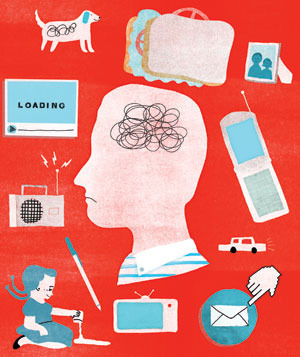
Image: Christopher Silas Neal
As the time we spend on interacting with our devices has skyrocketed over the last five years Dr. Nass’s work was particularly important to helping us recognize the dangers of our digital habits. I myself have been an ardent “multi-tasker’ over the years – taking great pleasure in the seemingly endless array of technologies I could simultaneously interact with. Oh, the joy, the comfort, and the warmth of all forms of visual and auditory stimulation simultaneously being accessed from the comfort of a desk or couch. The powerful modern day human controlling the world with the melding of brain and technology.
Well, Dr. Nass and others have striven to jolt us out of our technology stupor. The NY Times this week wrote (http://goo.gl/eCTc7O) that one of his most publicized research projects was a 2009 study on multitasking (Cognitive Control in Media Multitaskers – http://www.stanford.edu/~nass/Cogniti...). ”He and his colleagues presumed that people who frequently juggle computer, phone, or television screens, or just different applications would display some special skill at ignoring irrelevant information, or efficiently switching between tasks, or that they would prove to have a particularly orderly memory.”
The reality was not so rosy:
“We were absolutely shocked,” he said. “We lost all our bets. It turns out multitaskers are terrible at every aspect of multitasking. They’re terrible at ignoring irrelevant information; they’re terrible at keeping information in their head nicely and neatly organized; and they’re terrible at switching from one task to another”.
“One would think that if people were bad at multitasking, they would stop. However, when we talk with the multitaskers, they seem to think they’re great at it and seem totally unfazed and totally able to do more and more and more.”
With children doing more multitasking and people asked to do more of it at work, he said “We worry that it may be creating people who are unable to think well and clearly”.
What Nass’s research showed was that we are losing our ability to focus, concentrate, and go deep into subject matter. We are easily distracted. Multitasking actually impairs performance, not improves it.
(…continued, click below to read more)
The implications for this are profound – our technology keeps getting more sophisticated, but in the process it may be reducing our ability to be thoughtful, contemplative, critical-thinking human beings.
Nass’ second point is interesting – why don’t multitaskers stop doing it because they are bad it. Well, that’s because we don’t realize that we’re bad it. One would have to be mindful and conscious to come to that conclusion – the opposite of multitasking. The New Atlantis magazine in an excellent article in 2008 (http://www.thenewatlantis.com/publications/the-myth-of-multitasking) reported that the impact of multitasking is in fact worse than mere distraction – “In 2005, the BBC reported on a research study, funded by Hewlett-Packard and conducted by the Institute of Psychiatry at the University of London, that found:
“Workers distracted by e-mail and phone calls suffer a fall in IQ more than twice that found in marijuana smokers.”
The psychologist who led the study called this new “infomania” a serious threat to workplace productivity. One of the Harvard Business Review’s “Breakthrough Ideas” for 2007 was Linda Stone’s notion of “continuous partial attention,” which might be understood as a subspecies of multitasking: using mobile computing power and the Internet, we are “constantly scanning for opportunities and staying on top of contacts, events, and activities in an effort to miss nothing.”
“Continuous Partial Attention” – that phrase sort of sums it all up doesn’t it? We are not fully present, and that lack of attention causes us to be less productive. It often takes us longer to absorb material . Have you noticed how you have to re-read something a number of times when you are in full multitask mode?
Multi-tasking, or task switching, also introduces a delay in returning to the task at hand. Research studies over the years have shown that it takes anywhere from 18 to 24 minutes for a person to resume the level of focus they had before they were interrupted or diverted their attention. Talk about productivity hit.
Yet, returning to my point in the opening paragraph – I actually liked multitasking and so do many others. Why? A study at Ohio State University (http://researchnews.osu.edu/archive/multitask.htm) in 2012 tackled this issue. They found:
The findings showed that multitasking often gave the students an emotional boost, even when it hurt their cognitive functions, such as studying.
“There’s this myth among some people that multitasking makes them more productive,” said Zheng Wang, lead author of the study and assistant professor of communication at Ohio State University.
“But they seem to be misperceiving the positive feelings they get from multitasking. They are not being more productive – they just feel more emotionally satisfied from their work.”
Take, for example, students who watched TV while reading a book. They reported feeling more emotionally satisfied than those who studied without watching TV, but also reported that they didn’t achieve their cognitive goals as well, Wang said.
“They felt satisfied not because they were effective at studying, but because the addition of TV made the studying entertaining. The combination of the activities accounts for the good feelings obtained,” Wang said.
The old tastes great, but is not great for you story we keep experiencing over and over in our modern day lives…
So what should we do?
Ideally we would want to single task all the time as we would be truly mindful and fully experience every moment. But at a minimum, when you are doing things that really matter, you need to focus on just one task.
Eliminate the distractions of multiple open apps and windows on your computer when working on critical items. Go full screen and eliminate all distractions.
Try to focus in bursts of time. For example, block off one hour to an important task and don’t do anything else. Afterwards, give yourself a break, and then come back and work on the next focused block.
One of the reasons why we multitask more than ever is that we can. The devices that let us multitask are portable and always with us – smart phones, tablets, and laptops. Even if we want to read and not be distracted, its tough because we are reading on our tablets! So at least keep the cell phone at bay, and when reading on a digital device, vow to read in a solid block of time without distracting yourself with email, web surfing, etc.
No problem with listening to Music when doing other things. In a 2009 NPR interview, Dr. Nass stated “Music, or at least instrumental music, seems to be the one modality that doesn’t seem to lead to problems with multitasking.” That said, try single tasking in silence from time to time – complete focus. See how you feel afterwards – did you feel you retained more information, were more calm, more productive, were able think more clearly and deeply?
Be intentional with your approach to your day. Map out the top 3-5 things you want to accomplish during the day and then plan out the time blocks where you will accomplish them. This way you can minimize distractions and devote your full attention to your most important priorities.
One of the biggest multitasking pitfalls may actually be the non-stop internal chatter of our minds. We are often thinking about un-related events, problems, worries when we are working on a task. In order to alleviate this, practice active Mindfulness. Notice when your attention has wandered off and bring it back into focus. You can perhaps even use a trigger word to repeat to yourself. I use ‘Focus’.
Strengthen your ability to focus your thoughts by practicing meditation every day. See my overview on Meditation in my book Think Smarter in a Digitally Enabled World which will be released on November 15th.
Ultimately, we need to accept that our modern day multitasking lifestyles are robbing us of the most precious asset we have – the full experience of the present moment – the only thing that truly exists. Let’s get it back.
Let me know how you’ve dealt with the multitasking issue in your own life – leave a comment below or send me an email – jay@thinksmarterworld.com.
The post Mental Shrinkage appeared first on Think Smarter World.
November 1, 2013
Tivo for your In-Box
One of the ten principles of Think Smarter in a Digitally Enabled World is to Manage Information Abundance. If you’re like me, this is a constant challenge. The amount of new content being created is immense. Every day my inbox swells with new articles, blog posts, and newsletters that I have signed up to receive.
The problem is that I like to keep my in-box relatively clean so that I can ensure I am seeing and reacting to emails I need to take near term action on. If I were to go through every email and read in real time everything of interest, I wouldn’t do much else but manage my in-box. Just like using Tivo or another DVR with TV programs and movies – I need to “time-shift” my consumption of this content and be able to control the timing of when I view it.
Many people deal with this by using productivity guru David Allen’s method of moving the emails they can’t deal with at the moment to another folder for processing later. I’ve been doing that for years and it certainly helps. David feels that this offloads the item from your short term memory and frees you up to concentrate on more pressing items.
But I find that the method still leaves me a bit frazzled. The reason being that most of the time, I open the email, I then see an article or post that I want to read, but since the time is not right, I file the email away for later. But that still leaves me with two problems:
I end up with an accumulated list of things I know I want to get to and since the email is still there, I am left with a bit of stress of all those unprocessed emails sitting in that dark Follow-Up folder…
When I am ready to read those posts and articles I will have to open up the email again, scan and locate what I was interested in reading the first time, click to open up in my browser, and then finally read. When you are dealing with a high volume of emails, this redundant action is a major time waster.
There is a better way to deal with this problem which eliminates these two issues. My solution is to use an App called Pocket – essentially a Tivo for your In-Box.
Pocket allows you to save a web page to access it for reading it later. This delayed gratification allows you to more quickly process your inbox, not have to re-read an email later to figure out what links you are interested in, and neatly organize your online reading list for a more appropriate time. For us MAC users, we can achieve a similar result by using the Reading List capability in the Safari browser. I in fact use both Reading List and Pocket – I use Reading List as a placeholder for web pages that I need to come back to as research for a current project or task I am working on and Pocket for general articles of interest.
But Pocket has a number of features that go much beyond Safari’s reading list feature and make it indispensable in today’s multi platform / multi app digital world:
Pocket runs on MAC OSX, iOS, Android, Chrome, and any web browser web. There are also third party clients for Windows Phone, BlackBerry, WebOS, and others available. So, if you are someone who uses a number of different platforms spread out across your home and business lives, Pocket will keep you synchronized no matter what device you are using at the time.
Pocket also works with a number of third party reading apps – Pulse, Flipboard, and Zite being examples and is in fact integrated into over 500 apps! When you are using one of those apps, Pocket allows you to save an article for reading later directly from within the app.
Pocket allows you to see your content in “Article View” – a very clean, non-distracting presentation of the article alone or in “Web View” – where you see the article within the actual web page. Safari’s Reading List functions similarly, but always defaults to web view. With Pocket, you can default to seeing every article in Article View if that’s what suits you.
Allows you to sort and retrieve by Article, Video, or Image.
Built in social networking – send any article video or image by email and post to Twitter, Facebook, or Buffer. Also includes direct interface to your Evernote account for long term storage of content.
A separate “Archive” folder where you can park web pages for longer term viewing or retrieval so that you keep your main Pocket page cleaner.
Unlike some other read-it-later apps, it’s free.
If you want to manage your particular abundance of information, Pocket is a must have app.
Jay Kshatri
www.ThinkSmarterWorld.com
Was this post helpful to you? Please leave a comment at the end of the post on the website. And, if you haven’t already downloaded your free e-book on The Art of Thinking Smarter, please visit www.ThinkSmarterWorld and register.
The post Tivo for your In-Box appeared first on Think Smarter World.

